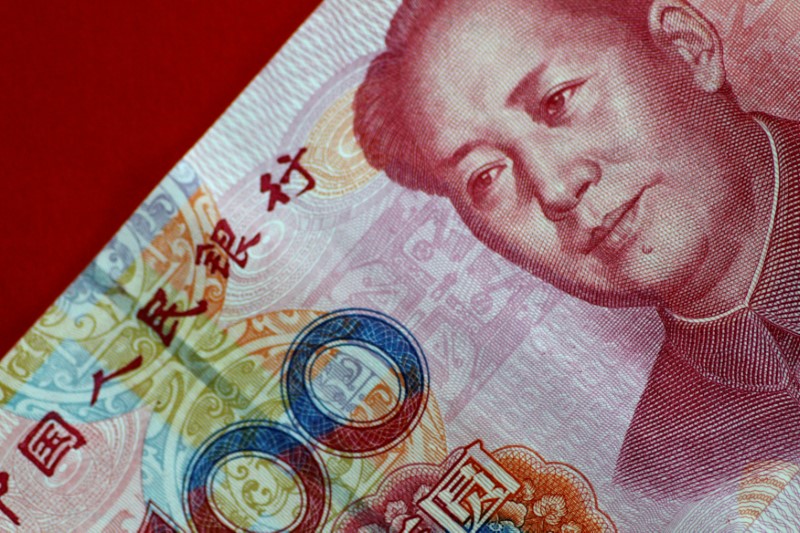 © Reuters. Illustration photo of a China yuan note
© Reuters. Illustration photo of a China yuan noteBy John Ruwitch and Winni Zhou
SHANGHAI (Reuters) – China’s central bank on Tuesday lent 200 billion yuan ($31 billion) to financial institutions via its medium-term lending facility (MLF), highlighting concerns over liquidity and potential economic drag from a trade war with the United States.
The surprise injection of funds came just hours after U.S. President Donald Trump escalated the tit-for-tat trade scrap with Beijing by threatening to impose a 10 percent tariff on $200 billion of Chinese goods.
No MLF loans were maturing on Tuesday, whereas recent operations had come on days when MLFs were due to mature.
The move also comes after the central bank’s unexpected decision last week to leave borrowing costs for interbank loans unchanged after the U.S. Federal Reserve raised its policy rate. Analysts had forecast the People’s Bank of China (PBOC) to follow the Fed and increase rates modestly – as it has tended to do – to keep the spread between Chinese and U.S. yields stable.
Tommy Xie, Head of Greater China research at OCBC Bank, said the MLF injection was probably “part of the package” of measures to counteract the potential fallout from the trade conflict.
“With the stakes for trade war to increase to $200 billion, there is no way for China to match. But at least, it has signaled clearly that China will not give up its bottom line to support its own high-tech industries,” Xie said.
“Instead of becoming trapped in this tit-for-tat vicious cycle, we expect China to expedite its plan to boost its domestic demand via proactive fiscal policies to cut tax and increase expenses.”
He said the PBOC could become more “stimulative” against a backdrop of rising credit default risks, slowing growth and a looming trade war.
The interest rate for the one-year MLF was 3.30 percent, the PBOC said, unchanged from the previous one-year MLF injection.
The cash injection was to “make up for mid- to long-term liquidity gap in the banking system” to counter factors including tax payments, government bonds issuance and maturing reverse repos, according to the PBOC statement.
David Qu, market economist at ANZ Bank in Shanghai, said the central bank was indeed facing some pressure on the liquidity front from rising corporate financing costs, suspended bond issuance and credit defaults.
“The central bank is responding to those pressures,” he said.
“The MLF issuance today could also be aimed at easing the concerns financial markets had over the Sino-U.S. trade war.”
The PBOC said in the same statement that it injected another 100 billion yuan via reverse repos on Tuesday morning. 50 billion yuan worth of reverse repos is set to expire on the same day.
The PBOC last injected funds via MLFs on June 6, lending 463 billion yuan to financial institutions as 259.5 billion yuan worth of MLF loans came due.
Fusion Media or anyone involved with Fusion Media will not accept any liability for loss or damage as a result of reliance on the information including data, quotes, charts and buy/sell signals contained within this website. Please be fully informed regarding the risks and costs associated with trading the financial markets, it is one of the riskiest investment forms possible.
Source: Investing.com




























